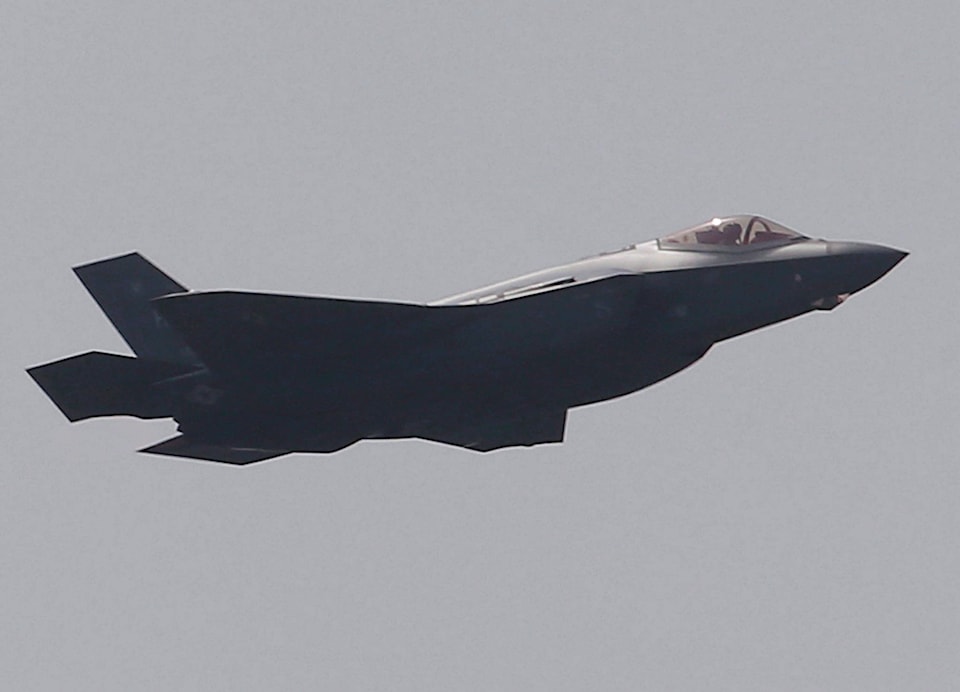OTTAWA — The long road to replacing Canada’s aging fighter jets took a surprising turn Tuesday as the federal Liberal government added a caveat to its latest battle of the bidders: contenders deemed to be harming the country’s economic interests will find themselves at a “distinct disadvantage.”
The plan is to replace the Royal Canadian Air Force’s current fleet of CF-18 with 88 sleek, modern new planes, Procurement Minister Carla Qualtrough and Defence Minister Harjit Sajjan told a news conference — a contract worth between $15 billion and $19 billion.
But the economic-interests test, still in the development stages with the help of the aerospace industry, was an unexpected twist that appears to have raised as many questions as answers.
The government also confirmed Tuesday that it is walking away from plans to buy 18 Super Hornets from U.S. aerospace firm Boeing amid a bitter trade dispute with Montreal-based rival Bombardier. Canada will instead buy 18 second-hand F-18s from Australia to deal with what the Liberals call a critical shortage of jets until the entire fleet can be replaced.
While the full cost and delivery schedule are still being ironed out, the move will ultimately save time and money, Sajjan insisted.
The deal must still be approved by the U.S. government, which originally sold the F-18s to Australia and retains control over the transfer of such arms.
During question period Tuesday, Conservative Leader Andrew Scheer blasted Prime Minister Justin Trudeau’s plan to buy old, second-hand aircraft that are of a similar vintage to the planes the government is replacing.
“If the prime minister is so keen on buying fixer-uppers, will he come over?” Scheer quipped. ”I have an old minivan I would love to show him.”
But it was the Conservatives themselves who made a hash of the fighter-jet file and created the need for an interim fleet, Trudeau retorted.
Gen. Jonathan Vance, Canada’s chief of the defence staff, was also on the dais at Tuesday’s news conference alongside Qualtrough, Sajjan, Transport Minister Marc Garneau and Economic Development Minister Navdeep Bains. The Australian aircraft are safe and will meet Canada’s needs, he insisted.
“Make no mistake, these aircraft will work fine and those aircraft are very much needed,” Vance said.
The decision to walk away from the interim Super Hornets — which carried an estimated price tag of $6 billion — was hardly a surprise, considering the government’s recent anti-Boeing rhetoric. But it remains to be seen how Boeing will be impacted by the economic-interest test, since the Chicago-based aerospace giant has major operations in Canada.
Boeing has already made it clear it’s eager to enter the Super Hornet into the competition, despite its chilly relations with Ottawa over Bombardier. Qualtrough said the competition would be transparent and open to all, and that the new test will apply to all major military purchases in future.
But the ministers didn’t dispute the notion that Boeing could be already at a disadvantage.
“The purpose of this new policy is to clearly demonstrate that anyone that wants to engage Canada, if they cause economic harm, will be at a distinct disadvantage,” said Bains.
“That’s the objective. This is really about our national interest. Our economy. And good-quality jobs in Canada.”
Boeing will review the government’s announcement, including the new economic-harm test, before deciding on next steps, company spokesman Scott Day said in an email.
At the same time, Day noted that Boeing employs 2,000 Canadians, including many in Winnipeg, conducts business with 560 local companies, and contributes $4 billion to the economy each year.
“If you look at Boeing’s record in Canada, I think you have to let our record speak for itself.”
That touches on one of the main questions with the new test, said defence analyst David Perry of the Canadian Global Affairs Institute: how the test is applied to companies like Boeing, which already have large interests in Canada.
“That will be fascinating to see because there will be an extraordinary amount of subjectivity in that,” Perry said.
“They have the trade action and complaint against Bombardier. But they also do billions of dollars of economic activity in Canada every year. How do you weigh those two things?
“I think that will be extraordinarily difficult.”
